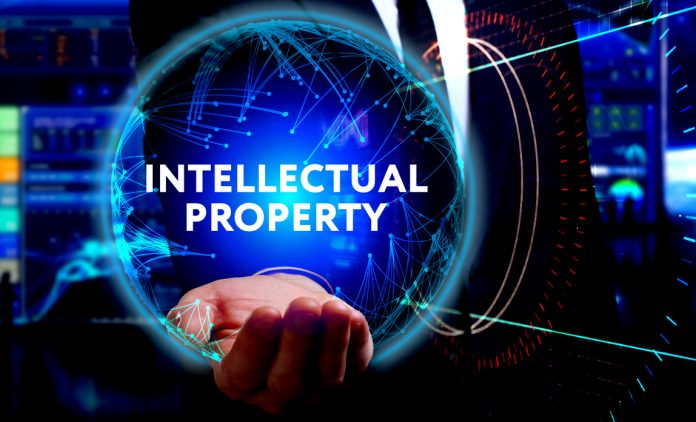This article is written by Neha Sunaria studying at Amity University, Rajasthan and Diploma in US Intellectual Property Law and Paralegal Studies. This article has been edited by Ruchika Mohapatra (Associate, Lawsikho).
This article has been published by Sneha Mahawar.
Table of Contents
Introduction
The gaming world is a place of relaxation for a vast group of people. There are computer experts that redefine creativity and coding style. The world of gaming and the law are interconnected as various laws are required to protect the owners as well as the creators of these video games and their rights. The art of storytelling in games has been increasing over the years. The subtleties of cinematic exposure in the universe of games are like never before. The Battlefield series has had various iterations over the years, such as when EA Games reimagined it with Battlefield 2042. The article deals with the legislation protecting the owners and creators of video games. It highlights the way distribution takes place. It concludes that the development of games also invites intruders that knock on the realm of the law from time to time.
Are video games related to IP
The ladder of intellectual property rights is built by reacting to risk factors for the creators and developers of a video game. Copyright protects the derivative and the original work expressed in music, code, website design, characters and the script in the ambience of literary and artistic works. A trademark gives an identity to a game, which makes it different from the competitors dealing in relative trade. Furthermore, rights for the product or process of hardware setting or novel applications like the rules of a game are protected by patents. A trade secret protects the information known by the creator and is implemented by a non-disclosure agreement, data security agreements, etc. Lastly, the user interface is the appearance of a game and becomes a part of the design.
Copyright
The Copyright Act does not expressly protect video games but does so in the realm of literary and artistic works. Section 13 of the Copyright Act of 1957 protects computer programmes as literary works, while sections 14 and 57 protect economic and moral rights. India is a member of the TRIPS that established Article 11 of the agreement, which provides rental rights which are automatically granted to the author of the work. Audio-visuals are also protected under copyright law but are not expressly granted protection for video games, which is quite debatable. Furthermore, depending on the type of work, a period of 60 years is guaranteed.
Trademark
A trademark protects the distinguished components of the game. These can be a word, letter, device, brand, name, or a combination of the previous. Its protection extends to the characters in the game, as they are functioning under the same mark. Statutory protection is necessary for exclusive rights to be granted to the person, which can extend to ten years from the date of registration. The protection can be renewed from time to time under Section 25 of the Act. Liabilities against infringement of a registered mark or the action of passing off for an unregistered mark are decided based on the claims provided by the sufferer.
Patents
Patents are issued when the elements of non-obviousness, novelty, utility, and industrial application are present in an invention. Patent registration secures the product or process by providing the authorization to sell, transfer, and utilise it to the owner. The patentee enjoys protection for 20 years under Section 53 of the Act. The owner can also pay a renewal fee at the time of expiration.
Trade secrets
Sheltered by the law of contract, equity, and common law, it is administered by the terms and conditions of the agreement between the respective parties. For instance, it could be any proprietary information about video games. In the case of Bombay Dyeing and Manufacturing Co., Ltd. v. Mehar Karan Singh, the defendant disclosed information related to the custom software of the plaintiff’s company to a competitor when he was bound to keep it confidential per agreement. As pronounced by the Bombay High Court, the appropriateness of a trade secret depends on the measures taken by the owner to protect it. It is to be seen whether the owner has taken steps to keep the information confidential, the degree of information shared with the employees, the efforts made by the information holder to develop it, and the commercial value attached to it.
Design
Governed by the Design Act, 2000, industrial design constitutes any shape, configuration, lines, or colours that can be seen by the eye when applied to an element. The design must be novel and unpublished before being registered. The Term of protection extends to ten years for the inventor and can be extended further. Here, the interface means how the users or competitors perceive the game. Design can also be constructed with the help of computer codes, which are construed to be protected by copyright law, blending here and becoming pretty helpful.
Is there a global perspective on IP protection of video games
Berne convention
It works on the principle of automatic protection and national treatment. The Berne convention contracting parties are also protected in other contracting countries. It works on the belief of reaching out to the world, at present, 179 countries are signatory members of the convention, including India, Norway, Egypt, the USA, and Zimbabwe. It safeguards the music composed with or without words and illustrations under literary and artistic work per Article 2. It also grants the author the right to adaptation, translation, or reproduction of the work, as well as moral rights in incidents of defamation that help the creator claim authorship of such a work.
Madrid protocol
A single trademark application is filed with the USPTO to acquire protection in all member nations. The preference to opt for a particular nature resides with the applicant, and the fee for the application is paid by the designated contracting party. This protocol was also helpful to the game character Sonic the Hedgehog, the creators of which have tried to create a secure IP environment for it in many countries.
TRIPS agreement
The TRIPS agreement provides protection to those who take steps to prevent unfair commercial use by safeguarding commercial value, which can be done with the help of confidentiality agreements. It also necessitates general obligations, provisional measures, and effective remedies that restrict infringement of intellectual property. This agreement strives to minimise the burden of enforcement of IP rights for the parties that seek to protect them.
Paris convention
The convention for industrial property delivers the rights of priority and national treatment to foreign nationals. Under this treaty, the applicant enjoys national treatment in a foreign country as they’d have if they were a citizen of it.
A simple approach to legislative protection of video games
Manuel Noriega v. Activision Blizzard, Inc.
In this case, the plaintiff claimed that the defendant used his image in the game character of Call of Duty: Black Ops II. He was also opposed to the way the defendant used it to help a villain. The Court applied the transformative test and held that it did not amount to the extortion of an image. The case facilitated the use of the right of publicity as a defence rather than the transformative test in a scenario like this.
E.S.S. Entertainment 2000, Inc. v. Rock Star Videos, Inc
In this case, the plaintiff accused the defendant of using the logo and trade dress in their video game series from the strip club PlayPen with no prior permission. The defendant manufacturer company used the words “PIG PEN” in their virtual game, besides creating a mimic of locations in Los Angeles. The district court held that it does not infringe upon the plaintiff’s logo or mislead consumers to believe they’re associated with each other, adhering to no artistic distortion to the consumers.
Mazooma Games v. Nova Productions Ltd
In this case, the plaintiff accused the defendants of copying the screen appearance of their video game, Pocket Money. The court dismissed the claim of infringement because screen appearance is not a substantial part of the game like software. The court refused, saying that there was no reproduction frame to frame. This decision lays down the unanswered fact that if the artistic work is not well protected, someone else will reproduce it again. As it would remain unquestioned on the part of the defaulter, the stress on the author matters.
North American Philips Consumer Electronics Corp. v. Atari Inc.
In this case, the plaintiff claimed that the defendants’ cloned their maze game PAC MAN with the version of K.C. Munchkin. The defendants claimed that there were differences in the compositions of game characters and maze variations. The court granted an injunction against the defendant because copyright infringement may occur where there is a similarity in expression. The judgement explained that copyright does not protect the idea but the creative expression of components of a game.
Tetris Holdings, LLC v. XIO Interactive, Inc.
In this case, the plaintiff accused the defendant of infringing the copyright of TETRIS and trade dress by developing the same in his game, MINO. On the other hand, the defendant argued that they copied the elements unprotected by the copyright. The court held that the defendants did not present the game rules innovatively and that the doctrine of scenes fair and merging would not also apply here because they confused the users.
Sony Computers Entertainment v. Harmeet Singh And Ors
In this case, the Delhi High Court granted an ad parte injunction against the defendants for distributing and selling pirated software with the programme JAILBREAK in the video games. The defendants modified the software of Sony with no licence from the plaintiff and continued to sell it. . Subsequently, the gadgets involved in unauthorised circulation were equipped and sealed.
Are there difficulties with the distribution and ownership of video games
With various games developed over the years, consumers and distributors add to the overall mass. The distribution comes into the picture as soon as the game launches. It could happen before the launch that the creators are unable to justify consistently. It can happen legally or by pulling an illegal trick.
Licence
Licensing agreement helps the developer distribute and use products restricted to the terms and liabilities provided in it. The developer decides the provisions for the duration of use and compensation if the other person fails to follow them. It secures the developer or the author from the end-user who is using it and other consumers or entities that may cause any loss to its representation. Often, it happens in the case of misuse, mutilation, or abuse of the power to use the game.
Assignment
It is the transfer of ownership to a party subjected to specific grounds. The assignment rights may be transferred either fully or partially as designated by the assignor. The employer can become the owner of work created by an employee if there exists no specific agreement between them. Sometimes, the person who acquires a party to the contract to do specific work may become the first owner subjected to it. For example, if a freelancer assigns her work to another person, then that person becomes the owner.
United Kingdom
The 2019 incident at the National Film & Television School was regarding the institution’s preference to acquire the IP rights for the video games that the students of its MA programme in a game design created. The students claimed back the rights instead of paying an amount that was fixed by the institution itself, which challenged a lot of financially viable students. It also included a particular share to be paid to the institution on commercialising the video games by the students. The institution had set out a policy that mentions the rights guaranteed to the NFTS for any creation as a part of the IP course taught to them. The act was seen as a negative approach by the NFTS as the students are automatically enrolled on the terms when they join it. The signature by the owner per his or her will is taken as their assent to being bound legally to the terms. Students may not have the required knowledge to learn about policy agreements before starting the course itself. It has been observed to be harmful to the developer when entering into commercial agreements with another party. Students can be the owners and the assignment to third parties is also possible with a written agreement signed by the owner.
France
The components of video games are protected here like in common law countries. Here, the total work done by a person determines the curator of the game. It could also involve contributions to audiovisuals or the user interface. Every individual involved is significant in deciding the factor of authorship.
In common law countries, the advantage of authorship is often unseen by the creators of elements of the game. But in a civil law country like France, the details of the contribution are a viable part in deciding the intellectual property rights associated with the author.
The contributors are vested with copyright if they meet the criterion for authorship. The end-user licence agreement governs the incidents of exploitation of the video game. Unlike in common law countries, an employee can become the author of her own work even if she is employed. The employer becomes the legal author of the software written by the employee. The authorship may be transferable depending on the terms and conditions granted. In a common law country like India, the author is the one who transforms all the elements into the end product of a video game.
Conclusion
The distribution of IP is not just about protecting the right holder, but the efforts taken by the owner to protect it. The protection extends to the diversity of games on consoles, PCs, and mobile phones. It is the place where licensing comes in to protect those descending walls of developers and publishers. The use of video games may not decline when technology is at its fastest pace in the current world. With it, the legislation that safeguards any distortion and protection becomes competently necessary and is, therefore, constantly being passed and amended.
Students of Lawsikho courses regularly produce writing assignments and work on practical exercises as a part of their coursework and develop themselves in real-life practical skills.
LawSikho has created a telegram group for exchanging legal knowledge, referrals, and various opportunities. You can click on this link and join:
Follow us on Instagram and subscribe to our YouTube channel for more amazing legal content.
 Serato DJ Crack 2025Serato DJ PRO Crack
Serato DJ Crack 2025Serato DJ PRO Crack











 Allow notifications
Allow notifications



